![]()
![]()
![]()
Use LEFT and RIGHT arrow keys to navigate between flashcards;
Use UP and DOWN arrow keys to flip the card;
H to show hint;
A reads text to speech;
118 Cards in this Set
- Front
- Back
|
Critical AOA
|
Point where blade will start to stall. Approx 15 degrees.
|
|
|
Air density
|
Mass of air being encountered by the airfoil
|
|
|
What two factors of the lift equation can the pilot control?
|
Velocity (rotor rpm), and AOA (collective)
|
|
|
3 types of drag
|
Parasite, profile, and induced
|
|
|
3 types of drag
|
Parasite, profile, and induced
|
|
|
Parasite drag
|
Any body not producing lift
|
|
|
3 types of drag
|
Parasite, profile, and induced
|
|
|
Parasite drag
|
Any body not producing lift
|
|
|
Profile drag
|
The sum of form drag and skin friction.
|
|
|
3 types of drag
|
Parasite, profile, and induced
|
|
|
Parasite drag
|
Any body not producing lift
|
|
|
Profile drag
|
The sum of form drag and skin friction.
|
|
|
Form drag
|
Resistance caused by frontal impact of airflow on the airfoil as well as turbulence and suction occurring at the rear.
|
|
|
3 types of drag
|
Parasite, profile, and induced
|
|
|
Parasite drag
|
Any body not producing lift
|
|
|
Profile drag
|
The sum of form drag and skin friction.
|
|
|
Form drag
|
Resistance caused by frontal impact of airflow on the airfoil as well as turbulence and suction occurring at the rear.
|
|
|
Skin frictiin
|
The result of the slow down of the airflow in close proximity to the akin of the blades because of any surface roughness
|
|
|
3 types of drag
|
Parasite, profile, and induced
|
|
|
Parasite drag
|
Any body not producing lift
|
|
|
Profile drag
|
The sum of form drag and skin friction.
|
|
|
Form drag
|
Resistance caused by frontal impact of airflow on the airfoil as well as turbulence and suction occurring at the rear.
|
|
|
Skin frictiin
|
The result of the slow down of the airflow in close proximity to the akin of the blades because of any surface roughness
|
|
|
Induced drag
|
A by product of the creation of lift. Two sources. Down wash of air results from the downward reorientation of the airstream as it encounters the airfoil at any positive AOA. Pressure diff. between the upper and lower surfaces causes vortices at the wing tips.
|
|
|
3 types of drag
|
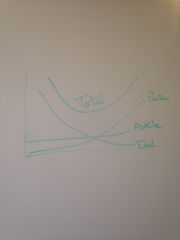
Parasite, profile, and induced
|
|
|
Parasite drag
|
Any body not producing lift
|
|
|
Profile drag
|
The sum of form drag and skin friction.
|
|
|
Form drag
|
Resistance caused by frontal impact of airflow on the airfoil as well as turbulence and suction occurring at the rear.
|
|
|
Skin frictiin
|
The result of the slow down of the airflow in close proximity to the akin of the blades because of any surface roughness
|
|
|
Induced drag
|
A by product of the creation of lift. Two sources. Down wash of air results from the downward reorientation of the airstream as it encounters the airfoil at any positive AOA. Pressure diff. between the upper and lower surfaces causes vortices at the wing tips.
|
|
|
3 types of drag
|
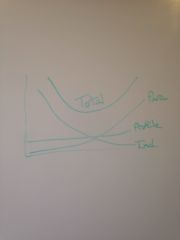
Parasite, profile, and induced
|
|
|
Parasite drag
|
Any body not producing lift
|
|
|
Profile drag
|
The sum of form drag and skin friction.
|
|
|
Form drag
|
Resistance caused by frontal impact of airflow on the airfoil as well as turbulence and suction occurring at the rear.
|
|
|
Skin friction
|
The result of the slow down of the airflow in close proximity to the akin of the blades because of any surface roughness
|
|
|
Induced drag
|
A by product of the creation of lift. Two sources. Down wash of air results from the downward reorientation of the airstream as it encounters the airfoil at any positive AOA. Pressure diff. between the upper and lower surfaces causes vortices at the wing tips.
|
|
|
3 types of drag
|
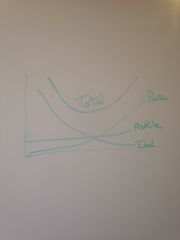
Parasite, profile, and induced
|
|
|
Parasite drag
|
Any body not producing lift
|
|
|
Profile drag
|
The sum of form drag and skin friction.
|
|
|
Form drag
|
Resistance caused by frontal impact of airflow on the airfoil as well as turbulence and suction occurring at the rear.
|
|
|
Skin friction
|
The result of the slow down of the airflow in close proximity to the akin of the blades because of any surface roughness
|
|
|
Induced drag
|
A by product of the creation of lift. Two sources. Down wash of air results from the downward reorientation of the airstream as it encounters the airfoil at any positive AOA. Pressure diff. between the upper and lower surfaces causes vortices at the wing tips.
|
|
|
3 types of drag
|
Parasite, profile, and induced
|
|
|
Parasite drag
|
Any body not producing lift
|
|
|
Profile drag
|
The sum of form drag and skin friction.
|
|
|
Form drag
|
Resistance caused by frontal impact of airflow on the airfoil as well as turbulence and suction occurring at the rear.
|
|
|
Skin friction
|
The result of the slow down of the airflow in close proximity to the akin of the blades because of any surface roughness
|
|
|
Induced drag
|
A by product of the creation of lift. Two sources. Down wash of air results from the downward reorientation of the airstream as it encounters the airfoil at any positive AOA. Pressure diff. between the upper and lower surfaces causes vortices at the wing tips.
|
|
|
LD max
|
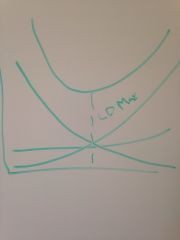
Min drag max lift
|
|
|
3 types of drag
|
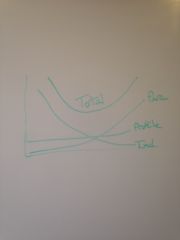
Parasite, profile, and induced
|
|
|
Parasite drag
|
Any body not producing lift
|
|
|
Profile drag
|
The sum of form drag and skin friction.
|
|
|
Form drag
|
Resistance caused by frontal impact of airflow on the airfoil as well as turbulence and suction occurring at the rear.
|
|
|
Skin friction
|
The result of the slow down of the airflow in close proximity to the akin of the blades because of any surface roughness
|
|
|
Induced drag
|
A by product of the creation of lift. Two sources. Down wash of air results from the downward reorientation of the airstream as it encounters the airfoil at any positive AOA. Pressure diff. between the upper and lower surfaces causes vortices at the wing tips.
|
|
|
LD max
|
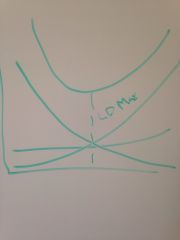
Min drag max lift
|
|
|
Three axes
|
Pitch or lateral, roll or longitudinal, and yaw or vertical
|
|
|
Three axes
|
Pitch or lateral, roll or longitudinal, and yaw or vertical
|
|
|
Torque
|
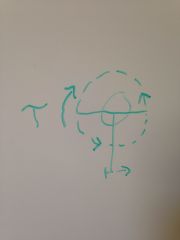
Rotation is clockwise (for us) and tail rotor counteracts rotation.
|
|
|
Three axes
|
Pitch or lateral, roll or longitudinal, and yaw or vertical
|
|
|
Torque
|
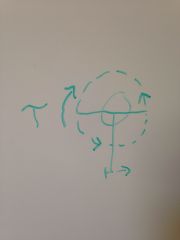
Rotation is clockwise (for us) and tail rotor counteracts rotation.
|
|
|
R44 landing gear
|
Spring and yield skid type landing gear
|
|
|
Three axes
|
Pitch or lateral, roll or longitudinal, and yaw or vertical
|
|
|
Torque
|
Rotation is clockwise (for us) and tail rotor counteracts rotation.
|
|
|
R44 landing gear
|
Spring and yield skid type landing gear
|
|
|
When can you test an ELT.
|
During the first 5 minutes after every hour. Freqs are 121.5 and 243.0.
|
|
|
Three axes
|
Pitch or lateral, roll or longitudinal, and yaw or vertical
|
|
|
Torque
|
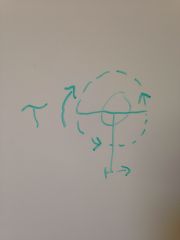
Rotation is clockwise (for us) and tail rotor counteracts rotation.
|
|
|
R44 landing gear
|
Spring and yield skid type landing gear
|
|
|
When can you test an ELT?
|
During the first 5 minutes after every hour. Freqs are 121.5 and 243.0.
|
|
|
Three axes
|
Pitch or lateral, roll or longitudinal, and yaw or vertical
|
|
|
Torque
|
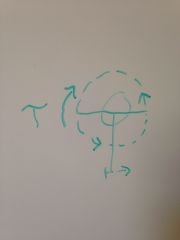
Rotation is clockwise (for us) and tail rotor counteracts rotation.
|
|
|
R44 landing gear
|
Spring and yield skid type landing gear
|
|
|
When can you test an ELT?
|
During the first 5 minutes after every hour. Freqs are 121.5 and 243.0.
|
|
|
Axis of rotation
|

|
|
|
Three axes
|
Pitch or lateral, roll or longitudinal, and yaw or vertical
|
|
|
Torque
|
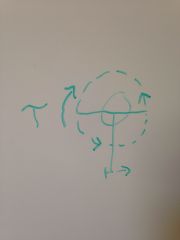
Rotation is clockwise (for us) and tail rotor counteracts rotation.
|
|
|
R44 landing gear
|
Spring and yield skid type landing gear
|
|
|
When can you test an ELT?
|
During the first 5 minutes after every hour. Freqs are 121.5 and 243.0.
|
|
|
Axis of rotation
|

|
|
|
Translating tendency
|

Tendency of the helicopter to move in the direction of the tail rotor thrust.
|
|
|
Three axes
|
Pitch or lateral, roll or longitudinal, and yaw or vertical
|
|
|
Torque
|
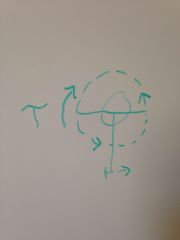
Rotation is clockwise (for us) and tail rotor counteracts rotation.
|
|
|
R44 landing gear
|
Spring and yield skid type landing gear
|
|
|
When can you test an ELT?
|
During the first 5 minutes after every hour. Freqs are 121.5 and 243.0.
|
|
|
Axis of rotation
|
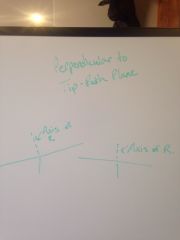
|
|
|
Translating tendency
|
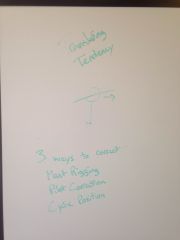
Tendency of the helicopter to move in the direction of the tail rotor thrust.
|
|
|
Pendular action
|
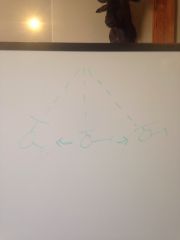
Ability of the helicopter to oscillate 360 degrees in a pendulum like manner due to it's considerable mass being suspended from a singular point
|
|
|
Three axes
|
Pitch or lateral, roll or longitudinal, and yaw or vertical
|
|
|
Torque
|

Rotation is clockwise (for us) and tail rotor counteracts rotation.
|
|
|
R44 landing gear
|
Spring and yield skid type landing gear
|
|
|
When can you test an ELT?
|
During the first 5 minutes after every hour. Freqs are 121.5 and 243.0.
|
|
|
Axis of rotation
|

|
|
|
Translating tendency
|
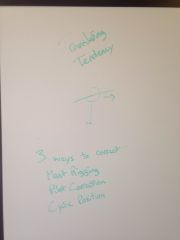
Tendency of the helicopter to move in the direction of the tail rotor thrust.
|
|
|
Pendular action
|
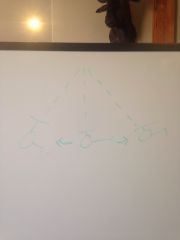
Ability of the helicopter to oscillate 360 degrees in a pendulum like manner due to it's considerable mass being suspended from a singular point
|
|
|
Dynamic rollover
|
When the helicopter has a pivot point other than the CG and a rolling moment begins. If the roll passes 15 degrees, the helicopter will roll over.
|
|
|
Three axes
|
Pitch or lateral, roll or longitudinal, and yaw or vertical
|
|
|
Torque
|
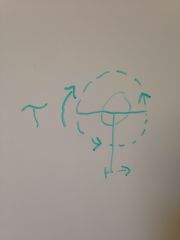
Rotation is clockwise (for us) and tail rotor counteracts rotation.
|
|
|
R44 landing gear
|
Spring and yield skid type landing gear
|
|
|
When can you test an ELT?
|
During the first 5 minutes after every hour. Freqs are 121.5 and 243.0.
|
|
|
Axis of rotation
|
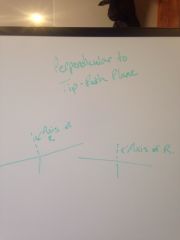
|
|
|
Translating tendency
|

Tendency of the helicopter to move in the direction of the tail rotor thrust.
|
|
|
Pendular action
|
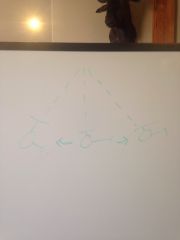
Ability of the helicopter to oscillate 360 degrees in a pendulum like manner due to it's considerable mass being suspended from a singular point
|
|
|
Dynamic rollover
|
When the helicopter has a pivot point other than the CG and a rolling moment begins. If the roll passes 15 degrees, the helicopter will roll over.
|
|
|
3 req for dynamic rollover
|
Rolling moment, pivot point, thrust greater than weight
|
|
|
Three axes
|
Pitch or lateral, roll or longitudinal, and yaw or vertical
|
|
|
Torque
|

Rotation is clockwise (for us) and tail rotor counteracts rotation.
|
|
|
R44 landing gear
|
Spring and yield skid type landing gear
|
|
|
When can you test an ELT?
|
During the first 5 minutes after every hour. Freqs are 121.5 and 243.0.
|
|
|
Axis of rotation
|
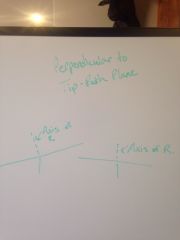
|
|
|
Translating tendency
|
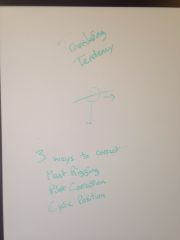
Tendency of the helicopter to move in the direction of the tail rotor thrust.
|
|
|
Pendular action
|
Ability of the helicopter to oscillate 360 degrees in a pendulum like manner due to it's considerable mass being suspended from a singular point
|
|
|
Dynamic rollover
|
When the helicopter has a pivot point other than the CG and a rolling moment begins. If the roll passes 15 degrees, the helicopter will roll over.
|
|
|
3 req for dynamic rollover
|
Rolling moment, pivot point, thrust greater than weight
|
|
|
Coning
|
Upper deflection of the blades due to the fact that the rotors are suspending the weight. Causes by lift and centrifugal force
|
|
|
Takeoff profile
|
|
|
|
Takeoff profile
|
|
|
|
R44 coriolis
|
|

